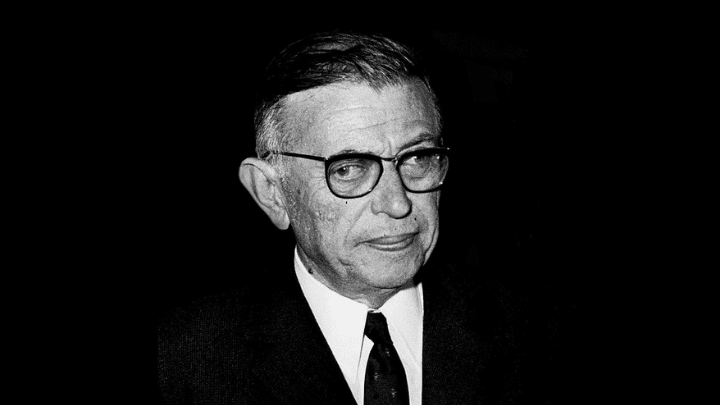10 Best John Keats Poems Everyone Should Read

John Keats, one of the foremost figures of the English Romantic movement, stands as an enduring symbol of poetic beauty and philosophical depth. Born in London in 1795, Keats’ life was tragically cut short at the age of 25, but his works continue to be celebrated as some of the most exquisite and profound in the English language. His poetic creations extend from dreamy odes filled with lush imagery to contemplative sonnets exploring love, mortality, and artistic expression. Each piece resonates with a timeless quality that connects readers to universal human emotions and profound philosophical inquiries.
Keats’ work, with its rich sensory language and a deep connection to nature, sought to break away from the strict poetic forms and rational thought of the Enlightenment era. The Romantic movement prized emotion, individuality, and the sublime beauty of the natural world, and Keats’ poems are quintessential examples of these ideals. Whether through the depiction of a nightingale’s song or the meditation on a Grecian urn, his poetry invites readers to transcend the mundane and glimpse the eternal.
Despite achieving only modest fame during his lifetime, Keats’ influence on poetry and literature has grown exponentially. His exploration of aesthetic beauty, the transient nature of life, and the pursuit of truth have inspired poets, writers, and thinkers for generations. The poems highlighted in this article are a testament to Keats’ mastery and his unique ability to evoke a sense of wonder and reflection. They serve as an entry point to his world, where every line is an invitation to deeper understanding and a connection to something ineffably beautiful.
1. Ode to a Nightingale
Ode to a Nightingale reflects Keats’s deep engagement with the natural world and his musings on the dichotomy of life and art. He paints the nightingale as an eternal and ethereal creature, its song permeating through history and transcending mortal suffering. The sensory imagery of the poem draws readers into a world of ephemeral beauty, where they too can momentarily escape the pains of earthly existence.
Despite the transcendent beauty depicted in the poem, Keats does not allow the reader to linger there indefinitely. He brings us back to the reality of human life with its transient nature and unavoidable sorrow. The return from the enchanting song of the nightingale to the cold truth of mortality creates a poignant contrast that remains one of the most moving elements of Keats’s poetry.
2. To Autumn
To Autumn stands as a vivid celebration of the season, portraying autumn not just as a time of decline but as a period of ripeness and fulfilment. Keats’s imagery of abundant fruit, blooming flowers, and reaping farmers reflects a profound appreciation for the beauty and bounty of the season. The harmonious relationship between humans and nature in this pastoral scene imbues the poem with a sense of contentment and connection.
The second stanza, however, subtly shifts to a more introspective mood, where the personified Autumn is seen as sometimes engaged in solitary contemplation. This shift introduces a more sombre tone, as autumn also represents the approaching end of the life cycle, leading to winter. The poem, thus, explores the beauty of impermanence and acknowledges the ephemeral nature of life.
3. Ode on a Grecian Urn
In Ode on a Grecian Urn, Keats explores the contrast between the timeless, frozen beauty captured in ancient art and the fleeting nature of real life. The urn serves as a vessel for eternal truths, its unchanging form and depicted scenes offering a tantalizing glimpse into an immortal world. Keats’s fascination with the urn allows him to explore the nature of art, beauty, and existence.
However, the poem also communicates an awareness of the limitations of art. The urn’s silent form can never truly convey the lived experiences of the characters it portrays. The line “Beauty is truth, truth beauty” is often debated by scholars; some see it as an affirmation of the value of aesthetics, while others view it as a reflection on the complex relationship between art and reality.
4. Bright Star
Bright star, would I were stedfast as thou art—
Not in lone splendour hung aloft the night
And watching, with eternal lids apart,
Like nature’s patient, sleepless Eremite,
The moving waters at their priestlike task
Of pure ablution round earth’s human shores,
Or gazing on the new soft-fallen mask
Of snow upon the mountains and the moors—
No—yet still stedfast, still unchangeable,
Pillow’d upon my fair love’s ripening breast,
To feel for ever its soft fall and swell,
Awake for ever in a sweet unrest,
Still, still to hear her tender-taken breath,
And so live ever—or else swoon to death.
Bright Star is a lyrical expression of Keats’s longing for something eternal and unchanging in the realm of love. He begins by admiring the steadfastness of a star, which remains constant amidst the shifting skies. This admiration turns into a desire for a love that can mirror this constant presence, forming a bond that defies time and change.
The poem also reveals a keen awareness of the contrasts between the eternal and the human. Though Keats envies the star’s permanence, he does not wish for its distant, unfeeling existence. He recognizes the warmth and vitality of human love as something far more precious, making the sonnet a moving declaration of both love and life.
5. On First Looking into Chapman’s Homer
Much have I travell’d in the realms of gold,
And many goodly states and kingdoms seen;
Round many western islands have I been
Which bards in fealty to Apollo hold.
Oft of one wide expanse had I been told
That deep-brow’d Homer ruled as his demesne;
Yet did I never breathe its pure serene
Till I heard Chapman speak out loud and bold:
Then felt I like some watcher of the skies
When a new planet swims into his ken;
Or like stout Cortez when with eagle eyes
He star’d at the Pacific—and all his men
Look’d at each other with a wild surmise—
Silent, upon a peak in Darien.
On First Looking into Chapman’s Homer marks a moment of profound artistic awakening for Keats. The experience of reading Chapman’s translation of Homer fills him with a sense of wonder, discovery, and connection to a broader literary tradition. The poem conveys the sheer joy and inspiration drawn from encountering a fresh perspective on classical works.
Keats likens this literary revelation to the discovery of new lands, using imagery of explorers and distant realms to symbolize his intellectual journey. The closing lines, comparing his experience to that of an astronomer discovering a new planet or Cortez encountering the Pacific, create a powerful metaphor for the transformative impact that literature can have on the human soul.
6. The Eve of St. Agnes
The Eve of St. Agnes weaves a tale of love, enchantment, and desire in a medieval setting. The poem follows the young lovers Madeline and Porphyro through a night where dreams and reality blur. Keats’s richly detailed imagery and sensual language create a dreamlike atmosphere, adding layers of complexity to the narrative.
The poem is more than a simple love story; it examines the thin line between dreams and reality, desire and fulfilment. The conflict between the physical and spiritual, the young lovers’ passion, and the stern moral code of their families adds depth to the narrative. The conclusion, ambiguous and open to interpretation, leaves readers pondering the nature of love and desire.
7. Ode on Melancholy
Ode on Melancholy offers a unique perspective on sadness, presenting it not as an affliction to be avoided but as a profound emotional state that offers insight into the human condition. Keats acknowledges that joy and beauty are transient, and in their passing, they leave a sense of melancholy that can lead to a deeper understanding of life’s complexity.
The poem provides a vivid description of the rich, dark allure of melancholy, intertwined with natural imagery and classical references. Rather than shunning sorrow, Keats urges the reader to embrace it, to experience it fully, and to recognize its connection to beauty and joy. This exploration of emotion sets the poem apart, offering a nuanced view of human experience.
8. La Belle Dame sans Merci
La Belle Dame sans Merci is a haunting ballad that tells the tale of a knight bewitched by a mystical woman. The poem’s archaic language and eerie tone create a timeless quality, drawing the reader into a world of fantasy and enchantment. The relationship between the knight and the beautiful, merciless lady is filled with passion, obsession, and a touch of the supernatural.
Despite the fantastical elements, the poem explores universal themes of love, longing, and disillusionment. The knight’s love leads to his downfall, as he is left alone and desolate. His tragic fate serves as a warning about the dangers of obsession and the fleeting nature of desire, making the poem a complex and compelling exploration of human emotion.
9. Ode to Psyche
Ode to Psyche is an invocation to the Greek goddess of the soul and a meditation on the creative process. Keats explores the nature of the human soul, its longing for transcendence, and its connection to love and imagination. He expresses a desire to honour Psyche in a way that surpasses traditional myth, promising to be her poet and to create a sanctuary for her in his mind.
The rich imagery and classical allusions in the poem elevate it to an ethereal realm, where the pursuit of beauty and truth becomes a spiritual quest. Keats’s deep engagement with Greek mythology, coupled with his personal artistic ambitions, makes this ode a profound reflection on poetry, love, and the human soul.
10. When I Have Fears
When I have fears that I may cease to be
Before my pen has gleaned my teeming brain,
Before high-pilèd books, in charactery,
Hold like rich garners the full ripened grain;
When I behold, upon the night’s starred face,
Huge cloudy symbols of a high romance,
And think that I may never live to trace
Their shadows with the magic hand of chance;
And when I feel, fair creature of an hour,
That I shall never look upon thee more,
Never have relish in the faery power
Of unreflecting love—then on the shore
Of the wide world I stand alone, and think
Till love and fame to nothingness do sink.
When I Have Fears reveals Keats’s anxiety about dying young and leaving his poetic ambitions unfulfilled. The sonnet begins with a list of fears—of never experiencing love, never seeing beauty again, and never achieving fame as a writer. These fears are deeply personal, providing insight into Keats’s mind and his preoccupation with mortality.
The poem’s volta, or thematic shift, occurs in the final couplet, where Keats acknowledges the ultimate insignificance of these fears in the face of death. Despite the poignant longing expressed in the poem, there is a recognition that all earthly pursuits and desires are transient. The sonnet stands as a moving testament to the human condition, capturing the beauty, ambition, and fragility of life.
Conclusion
John Keats’ brief life was filled with tragedy and unfulfilled dreams, yet his poetic legacy remains a beacon of literary achievement. These poems, filled with sumptuous imagery and philosophical insight, are merely a glimpse into the vast universe of his work. Whether pondering the eternal in the transient or seeking beauty in melancholy, Keats gave voice to universal human experiences in a way that continues to resonate. His poems are not just artifacts of the Romantic era but timeless explorations of life, love, and art that continue to speak to readers across generations.
In the hands of Keats, language transforms into something magical, capturing the essence of emotions and moments that defy simple definitions. He transcends the limits of his time, leaving behind a body of work that challenges, inspires, and enchants. Though he left us far too soon, Keats’ poetic voice endures, a testament to the enduring power of creativity and the human spirit. His work serves as a reminder that poetry can be a window to the soul, offering glimpses of truths that are at once deeply personal and universally human.






